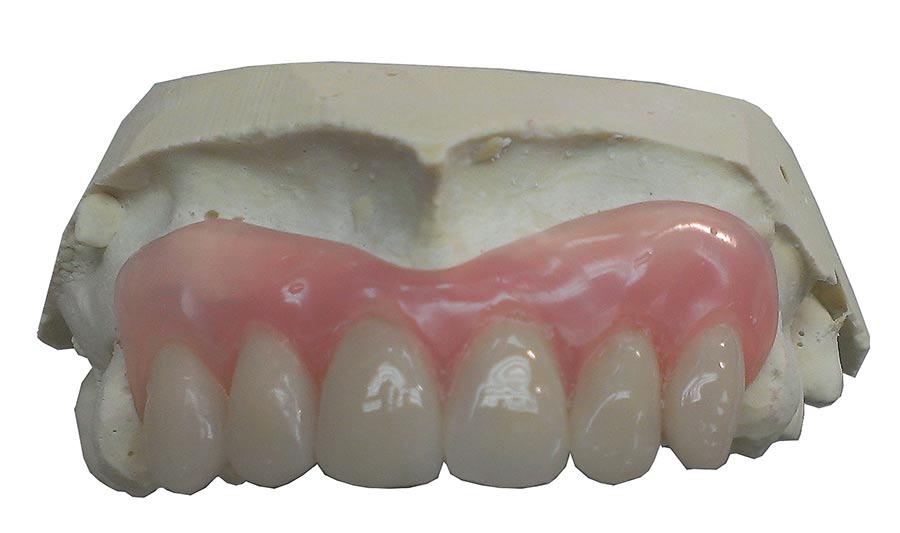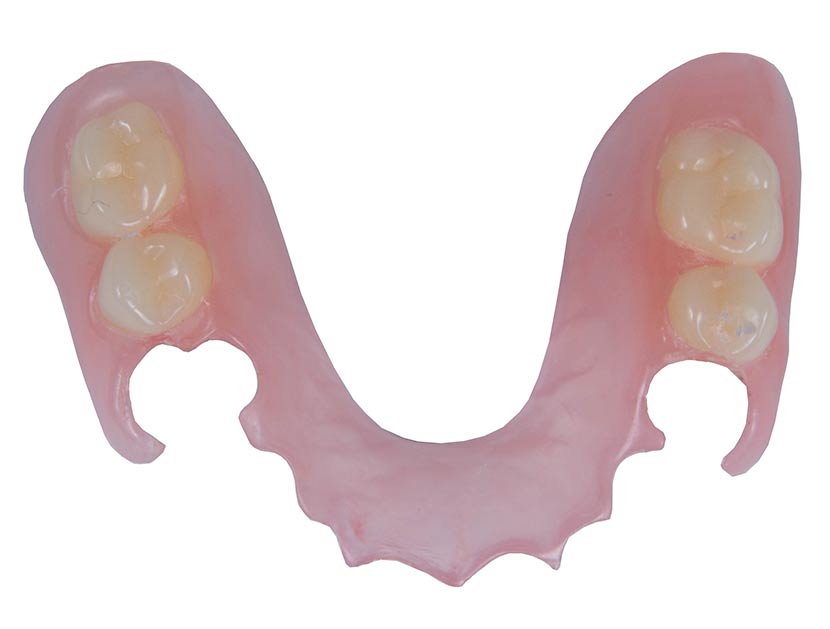Valplast – Flexible Partials
Valplast was the original flexible partial on the world market. It has been available in the United States since the early 1950’s.
Since its introduction, Valplast has remained the same. It was developed, tested and perfected over a six year period before it was released commercially. Valplast today is backed by over 50 years of performance and experience.
Valplast’s flexibility allows partials to engage hard tissue undercuts, eliminating the need for metal clasps. The translucency of Valplast blends with natural tissue so the partial becomes almost inconspicuous in the mouth.
Valplast’s retentive properties allow partials to be made considerably smaller than conventional partials. Patients love the fact that their partial often does not have to cover the palatal area.
The unique flexibility of Valplast allows partials to be made thinner than acrylic partials without sacrificing strength.
Valplast + Metal Chrome framework
Valplast can be added to a metal chrome frame work for superior aesthetics and for more stability in the larger valplast jobs that require multiple saddles. All metal clasps can be replaced using valplast clasps eliminating unseemly metal clasps.
What is the difference between Valplast and other flexible materials?
All flexible partials exhibit some degree of flexibility, but others have also shown, depending on brand name, a high rate of breakage, excessive rigidity, opacity, inconsistency and unnatural colour properties. Valplast was engineered with just the right degree of flexibility to perform predictably well in its intended usage.
What kind of impression should I take for a Valplast partial?
A mucostatic impression taken with alginate is needed to yield a successful Valplast partial.
How easy is it to fit a Valplast denture?
Simply by placing the case in hot tap water – (~55˚C) for approximately one minute, you can achieve a very smooth insertion and an excellent adaptation to the natural tissues of the mouth. If a clasp isn’t fitting perfectly, you may adjust it slightly by immersing that area of the partial in very hot water (~90˚C)and bend the clasp outward or inward as needed then immediately clench under cold water to maintain adjustment. Patients need to be aware that after an extraction, the gum tissues may be a little more sensitive than usual and may require time and patience for ultimate comfort.
How do I adjust a Valplast partial?
Never use a carbide or metal bur. Chair side: With your hand piece at about 24,000 RPM (slow speed) and using a rapid back and forth motion, reduce the area causing discomfort. Fibres at the edges can be removed with a scalpel. Usually no polishing is needed. Codentech has burrs available on request if adjustment if necessary. Please call us before you go ahead with adjusting our Valplast dentures.
Are there some cases where Valplast is not suitable?
Yes. Valplast is only suitable for partial denture cases. There are also other instances where Valplast may not be suitable or an alternative design may work better over another. Our Valplast specialists can advise.
How do I care for a Valplast partial denture?
Valplast Corporation recommends the use of Val-Clean because it works better than anything available in chemists. Eventually chemist store cleaners will leave a film and a dull, lifeless surface. Consistent use of Val-Clean will preserve and even restore the intended appearance of the partial.



